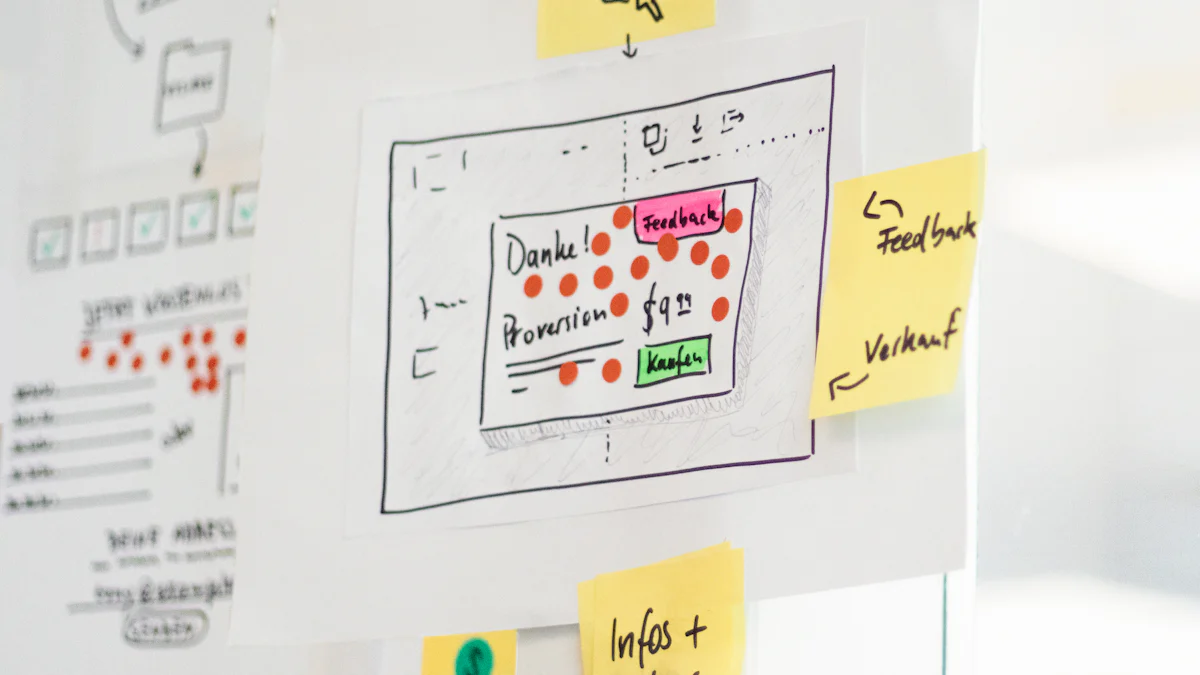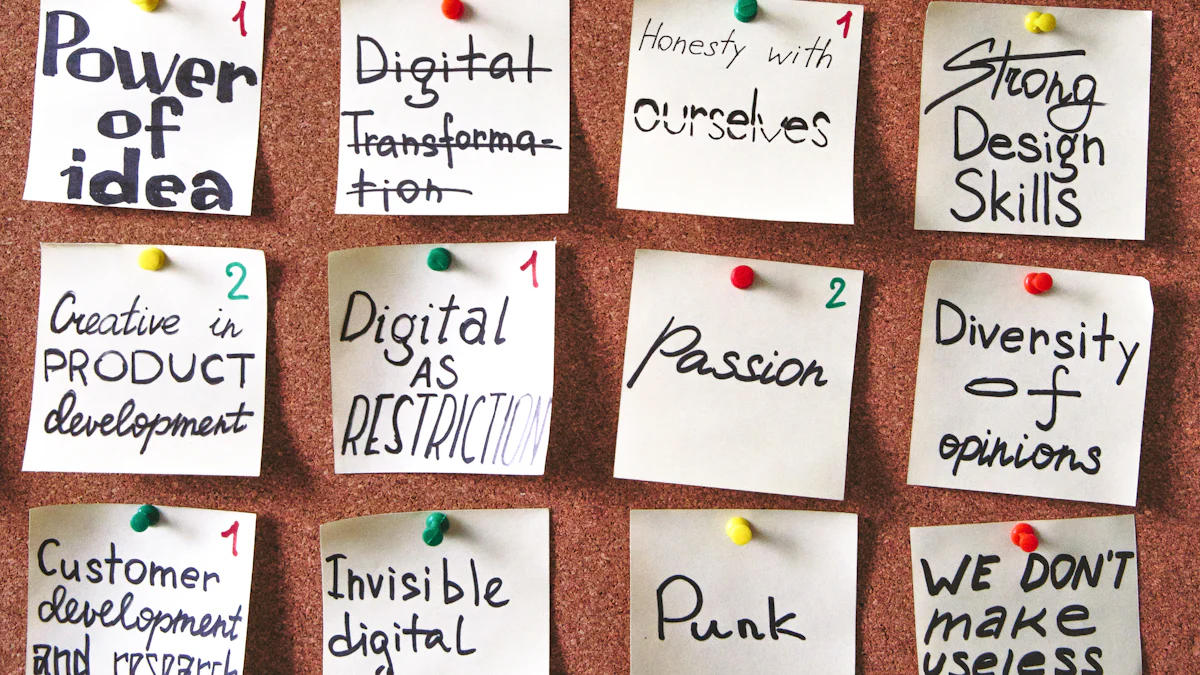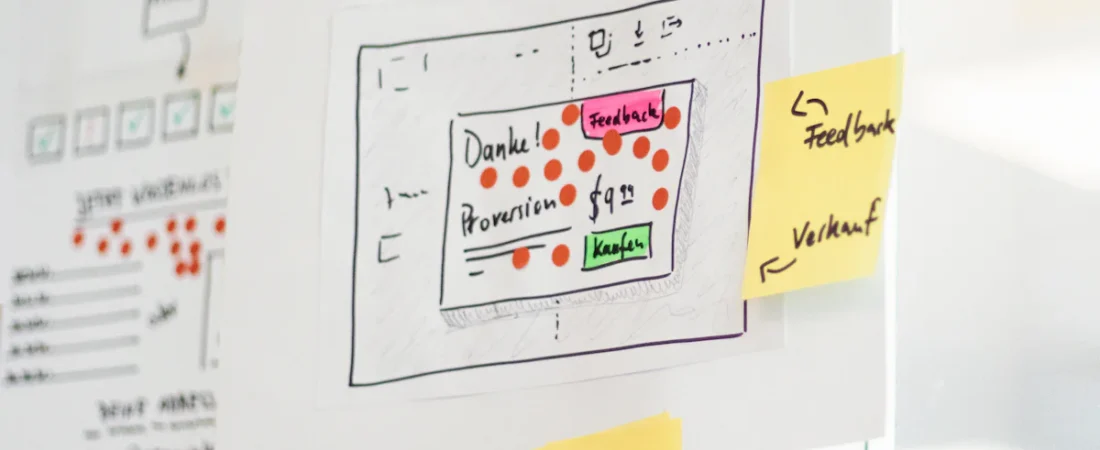
Have you ever wondered how apps, eBooks, or even online courses come to life? That’s where Digital Product Creation takes center stage. It’s the process of designing, developing, and launching intangible goods that exist entirely in the digital world. Digital Product Creation is revolutionizing industries by making products more accessible and cost-effective.
For instance, businesses can now innovate faster and reduce expenses. A physical therapy clinic might develop an app to guide patients through exercises and monitor their progress. This not only minimizes the need for in-person sessions but also creates a new revenue stream. And it’s not just businesses reaping the benefits. The global market for Digital Product Creation is thriving, projected to grow from $24.72 billion in 2023 to $49.02 billion by 2028, with a CAGR of 14.7%.
Whether you’re a creator or a consumer, Digital Product Creation is transforming the way we engage with products and services.
Key Takeaways
Digital Product Creation allows for faster and more cost-effective product development, reducing time-to-market by up to 50% and production costs by as much as 70%.
This process empowers businesses to innovate and reach a global audience, creating new revenue streams and enhancing customer engagement without the limitations of physical distribution.
The ideation phase is crucial; it involves brainstorming and market research to ensure the product meets real user needs, setting a strong foundation for success.
Testing is essential to refine your product; involve real users to gather feedback and ensure your product delivers a seamless experience before launch.
Digital products are not only beneficial for businesses but also empower individuals to monetize their skills, making personal development tools more accessible and affordable.
What Is Digital Product Creation?

Definition and Key Features
Digital Product Creation is all about crafting products that exist entirely in the digital world. These products, like apps, eBooks, and software, are intangible but incredibly impactful. What makes them stand out? Let’s break it down.
First, they’re fast. Digital products can be created and launched much quicker than physical ones. For example, the process reduces time-to-market by up to 50%. They’re also more sustainable since they don’t rely on physical materials, which means less waste. Another key feature is customer-centricity. You can design digital products to meet specific needs, offering a level of personalization that traditional products often lack. Plus, they’re cost-efficient. Sample production costs can drop by as much as 70%.
Here’s a quick comparison to help you see the difference:
Characteristic | Digital Product Creation | Traditional Product Creation |
|---|---|---|
Speed | Reduces time-to-market by up to 50% | Lengthy process with multiple stages |
Sustainability | More sustainable practices | Often involves significant waste |
Customer-Centricity | Allows for custom-made products and designs | Less focus on individual customer needs |
Cost Efficiency | Reduces sample production costs by up to 70% | High upfront investment in samples |
Importance in the Digital Economy
Digital Product Creation plays a huge role in today’s digital economy. Why? Because it helps businesses grow and innovate. For starters, it provides scalable solutions. You can reach a global audience without the limitations of physical distribution. It also opens up new revenue streams. Think about how apps or online courses generate income. On top of that, digital products improve efficiency, making businesses more profitable. They even help companies stay competitive by unlocking new customers and enhancing existing services.
Examples of Digital Products
You’ve probably used digital products without even realizing it. Here are some examples that have made a big impact:
Product | Description |
|---|---|
A health and fitness app that helps users track exercise routines, monitor calorie intake, and receive personalized guidance. | |
Mint | A financial management app that allows users to track expenses, monitor investments, and set financial goals. |
Kindle | An e-book platform offering a wide selection of e-books across various topics, providing users with information on many subjects. |
BBC News | A digital platform delivering up-to-date news on local, national, and international events through its website and app. |
These products show how Digital Product Creation can transform industries and improve lives. Whether it’s helping you stay fit, manage your money, or stay informed, digital products are everywhere.
How Digital Product Creation Works
Ideation
Every great digital product starts with a spark of an idea. But how do you turn that spark into something real? The ideation phase is where you explore possibilities and test their potential. You’ll begin by identifying opportunities and assessing if they’re worth pursuing. Techniques like brainstorming or clustering help you generate creative ideas. You can also use tools like SCAMPER to improve existing products or conduct SWOT analysis to weigh strengths and weaknesses.
Market research plays a big role here. Surveys and interviews with your target audience can reveal what they truly need. Design thinking is another powerful approach. It helps you empathize with users and understand their challenges. Once you’ve gathered ideas, test them with real users. Their feedback will guide you toward the most promising concepts. This phase is all about exploration and setting the foundation for success.
Design
Now that you’ve got a solid idea, it’s time to bring it to life visually. The design phase focuses on creating a user-friendly experience. Start by immersing yourself in the user’s world. Observe how they interact with similar products and listen to their feedback. This will help you define the problem your product solves.
Next, sketch out mockups or prototypes. These early models let you visualize the product and test its usability. Keep things simple and consistent. For example, navigation should feel intuitive, so users don’t get lost. Regular usability testing with real users is key. Their input will help you refine the design until it’s just right. Collaboration among your team also ensures everyone stays on the same page. A well-designed product isn’t just functional—it’s enjoyable to use.
Development
With your design ready, it’s time to build the product. The development phase is where your ideas take shape through coding and programming. This step often comes with challenges. For instance, ensuring data security is critical, especially if your product handles sensitive information. You’ll also need to integrate the product seamlessly into existing systems, which can be tricky.
Scalability is another factor to consider. Your product should adapt as your audience grows or as technology evolves. Quality assurance is essential here. Testing ensures the product performs well and meets user expectations. By addressing these challenges head-on, you’ll create a digital product that’s reliable and ready for launch.
Testing
Testing is where you make sure your digital product works as intended. It’s like giving your product a final check-up before it meets the world. This phase ensures everything runs smoothly and delivers the best experience for your users. But how do you test effectively? Let’s break it down.
Guidance research: This method helps you gauge how well your product resonates with users. By testing prototypes, you can measure consumer acceptance and make adjustments early.
A/B testing: This approach compares two versions of a feature to see which one performs better. It’s perfect for making design decisions.
Product refinement and optimization: This focuses on fine-tuning your product’s features to maximize its impact.
Regression testing: This ensures that new updates or features don’t mess up existing functionality.
Testing isn’t just about finding bugs. It’s about making your product the best it can be. You’ll want to involve real users during this phase. Their feedback will help you identify issues you might’ve missed. Plus, it gives you a chance to see how your product performs in real-world scenarios. The goal? A polished, reliable product that users will love.
Launch and Marketing
The launch is your product’s big debut, and marketing ensures it gets the attention it deserves. But how do you make it a success? Start by understanding your audience. Conduct market research to learn what they need and want. Then, build excitement with a pre-launch campaign. Tease your product on social media or share sneak peeks to create buzz.
When it’s time to launch, consider hosting an event. It’s a great way to attract clients and generate excitement. Testimonials can also help. They build trust and show potential customers why your product is worth their time. Affiliate marketing is another smart move. By partnering with others, you can tap into their audiences and expand your reach.
Here’s a step-by-step approach to ensure a smooth launch:
Develop a Minimum Viable Product (MVP) to gather early feedback.
Choose the perfect launch date to maximize visibility.
Plan for ongoing marketing efforts to keep the momentum going.
Don’t forget to focus on brand awareness. Consistent messaging and a unique value proposition will set your product apart. Use social media to engage with your audience and run targeted ads. The right strategy can turn your launch into a memorable event and set the stage for long-term success.
Applications of Digital Product Creation
Education
Digital product creation is reshaping education in ways you might not have imagined. It’s making learning more personalized and efficient. For example:
Students now have access to tools that adapt to their learning pace, offering a tailored experience.
Teachers can use digital platforms to access unlimited resources, from lesson plans to interactive activities.
Administrative tasks like grading and attendance tracking are automated, freeing up time for teaching.
The COVID-19 pandemic accelerated this shift. Schools and universities embraced digital solutions to keep learning alive. Tools like virtual classrooms and e-learning platforms became the norm. This transformation didn’t just fill a gap—it opened doors to new possibilities. Imagine experimenting with dynamic teaching methods and getting instant feedback from students. That’s the power of digital tools in education.
Business
In the business world, digital product creation is a game-changer. It’s helping companies streamline operations, reach new customers, and boost profits. Here’s a quick look at some examples:
Examples | |
|---|---|
SaaS | Canva, Slack, Salesforce, Google Docs |
Digital services | Medical consultations, online education |
Digital content | Netflix, Spotify, Masterclass |
Platforms & marketplaces | Facebook, Amazon, Etsy |
Software applications | Adobe Photoshop, WordPress |
These tools aren’t just convenient—they’re essential. Think about how apps like Mint simplify financial management or how platforms like GeeksforGeeks make learning coding accessible. Businesses are using these products to automate workflows, improve customer experiences, and stay competitive. Whether you’re running a startup or a multinational corporation, digital products can help you achieve your goals.
Entertainment
Entertainment has seen a massive shift thanks to digital product creation. Platforms like Netflix and Spotify have changed how you consume media. You can now enjoy high-quality content anytime, anywhere. But it doesn’t stop there.
The rise of immersive experiences is taking entertainment to the next level. Virtual reality (VR) and augmented reality (AR) are engaging your senses like never before. This industry was valued at $61.8 billion in 2019, and it’s only growing. Digital storytelling is another exciting trend. It uses tools to create interactive narratives that draw you in and keep you hooked.
Even the cinema landscape is evolving. Streaming platforms are blurring the lines between TV shows and movies. Extended narratives in series are becoming more popular than traditional films. This shift is changing how you experience stories, making them more engaging and accessible.
Personal Development
Digital product creation is transforming how you approach personal growth. Whether you’re learning a new skill, improving your health, or working on your mindset, digital tools make self-improvement more accessible than ever.
Think about it—how often do you turn to an app or an online course to learn something new? Digital products like meditation apps, fitness trackers, and language-learning platforms are designed to help you grow at your own pace. They’re convenient, cost-effective, and available whenever you need them.
Here’s why digital products are perfect for personal development:
Cost-effective: You don’t have to worry about high prices. Without manufacturing or shipping costs, these products are often more affordable.
Instant access: You can start using them right away. Whether you’re at home or on the go, they’re just a click away.
Take fitness apps, for example. They let you track your workouts, set goals, and even follow guided routines. You don’t need a personal trainer or a gym membership to stay active. Similarly, platforms like Duolingo make learning a new language fun and interactive. You can practice for just 10 minutes a day and see real progress.
Tip: Start small. Pick one area of your life you’d like to improve and explore digital tools that fit your needs.
Digital products also help you stay motivated. Many apps use gamification, like rewards and progress tracking, to keep you engaged. This makes personal growth feel less like a chore and more like an exciting journey.
So, whether you’re mastering a new skill or building better habits, digital tools can be your secret weapon for success. Why not give them a try?
Tools and Technologies for Digital Product Creation

Design Tools
When it comes to creating digital products, having the right design tools can make all the difference. These tools help you visualize ideas, create user-friendly interfaces, and ensure your product looks polished. Here are some popular options you might find useful:
Whimsical: Perfect for mapping out user flows and wireframes.
Figma: A go-to tool for modern design. It lets you control design elements and adjust them automatically.
Material Design: Offers a library of components to maintain a consistent user experience.
The Noun Project: Saves time with its extensive collection of ready-to-use icons.
Adobe Illustrator: Great for creating custom icons and vector illustrations.
Notion: A versatile tool for organizing projects and taking notes.
Mural: Ideal for remote teams to collaborate on design ideas.
These tools simplify the design process and help you focus on creating a product that users will love.
Development Platforms
Once your design is ready, development platforms help you bring it to life. These platforms streamline coding, testing, and deployment, making the process faster and more efficient. Here’s how they can benefit you:
Advantage | Description |
|---|---|
Faster Time to Market | Lets you create and test prototypes quickly without needing costly physical samples. |
Reduced Costs and Waste | Cuts down on expensive materials and production processes, saving money in the long run. |
Improved Collaboration | Makes it easier for teams to share designs and get feedback quickly. |
Increased Customer Engagement | Helps you create visually appealing and personalized experiences that keep users coming back. |
By using these platforms, you can focus on building a product that’s not only functional but also engaging for your audience.
Collaboration Tools
Teamwork plays a huge role in digital product creation. Collaboration tools make it easier for everyone to stay on the same page. They define clear touchpoints for teamwork, streamline communication, and set up protocols for smooth project delivery. This structure helps you avoid the chaos of unorganized collaboration.
For example, tools like Slack or Microsoft Teams let you communicate in real time, while platforms like Trello or Asana help you track tasks and deadlines. These tools ensure your team works efficiently, leading to a successful product launch.
Tip: Choose tools that fit your team’s workflow. The right tools can save time and reduce stress.
Marketing Platforms
Marketing platforms play a huge role in getting your digital product noticed. They help you connect with your audience, build trust, and drive sales. But with so many options out there, where should you start? Let’s break it down.
Here’s a quick look at some of the most effective platforms and strategies:
Strategy/Platform | Description |
|---|---|
Own Website | Selling directly through your own website gives you full control over branding and customer experience. |
Marketplace | Utilizing established marketplaces can provide immediate access to a larger audience. |
Digital Product Platforms | Platforms specifically designed for digital products can simplify the selling process. |
Social Media | Engaging with audiences on platforms like Twitter, Instagram, and LinkedIn can enhance visibility. |
Paid Ads | Running targeted ads can effectively reach a larger audience and drive traffic to your product. |
SEO | Building SEO can drive consistent sales by improving visibility in search results. |
Your own website is a great starting point. It lets you showcase your product exactly how you want. You can control everything, from the design to the customer experience. If you’re looking for a bigger audience right away, marketplaces like Amazon or Etsy can help. They already have millions of users browsing for products.
Social media is another powerful tool. Platforms like Instagram or LinkedIn let you engage directly with your audience. You can share updates, answer questions, and even run polls to understand what your customers want. Paid ads take this a step further. They allow you to target specific groups, ensuring your product reaches the right people.
Don’t forget about SEO. By optimizing your website or product page, you can appear higher in search results. This means more people will find you without spending extra on ads.
Tip: Combine multiple platforms for the best results. For example, use social media to drive traffic to your website or marketplace listing. This way, you’ll maximize your reach and boost sales.
Marketing platforms aren’t just tools—they’re your gateway to success. Choose the ones that align with your goals and start building your audience today.
Benefits of Digital Product Creation
For Businesses
Digital Product Creation offers businesses a chance to thrive in today’s fast-paced world. It eliminates the costs of manufacturing, packaging, and shipping physical products. This means you can price your products competitively while maximizing profits. Selling digital products also comes with high-profit margins since production costs are minimal.
You can reach a global audience without worrying about physical distribution. Whether you’re a small startup or an established company, scaling up becomes easier. You can start small, test the waters, and expand as demand grows.
Tip: Focus on creating products that solve specific problems. This approach ensures your offerings resonate with your audience and drive sales.
For Individuals
Digital Product Creation empowers you to turn your skills into income. Whether you’re a writer, teacher, or artist, there’s a digital product for you. For example:
E-books let you share your expertise or stories.
Online courses help you teach skills in an interactive way.
Templates and design assets provide ready-to-use resources.
Digital art allows creatives to sell their work globally.
Want to get started? Follow these steps:
Choose a product type that suits your skills.
Create content that addresses your audience’s needs.
Design and package your product attractively.
Market it using digital strategies.
With the right approach, you can build a steady income stream while doing what you love.
For Society
Digital products benefit society in many ways. They’re cost-effective, making them accessible to more people. They’re also convenient—you can access them anytime, anywhere. Entrepreneurs and creators can reach a global audience, breaking down barriers of geography and resources.
This democratization of production and distribution levels the playing field. It allows anyone with an idea to share it with the world. Plus, digital products reduce waste, contributing to a more sustainable future.
Note: By embracing digital products, you’re not just improving your life—you’re also supporting a more inclusive and eco-friendly society.
Digital Product Creation is more than just a process—it’s a gateway to innovation. You’ve seen how it transforms ideas into impactful digital products like apps, eBooks, and software. The process, from ideation to launch, offers key takeaways: faster time to market, reduced costs, and improved collaboration. It’s all about understanding customer needs, iterating designs, and using tools to refine your product.
The benefits are undeniable. Businesses can innovate, like Archer Career Services did by scaling their coaching services online. Individuals can turn skills into income, while society gains from sustainable, accessible solutions. Why not explore this exciting field? You could create something that changes lives.
FAQ
What is the difference between a digital product and a physical product?
A digital product exists entirely online, like apps or eBooks. You can access it instantly without shipping or storage. A physical product, like a book or gadget, requires manufacturing and delivery. Digital products are faster to create and more sustainable.
Can anyone create a digital product?
Absolutely! Whether you’re a writer, designer, or teacher, you can create a digital product. Start with your skills or expertise. Tools and platforms make the process easier, even if you’re not tech-savvy. All you need is an idea and determination.
How much does it cost to create a digital product?
Costs vary depending on the product type. Some tools are free, while others require subscriptions. For example, creating an eBook might only cost you time, while developing an app could involve hiring developers. Start small and scale as needed.
Do I need coding skills to create digital products?
Not always! Many platforms, like Canva or WordPress, let you create products without coding. For apps or software, you might need developers. But don’t worry—there are plenty of no-code tools available to help you get started.
How do I market my digital product?
Use social media, email campaigns, and SEO to promote your product. Build a website or list it on marketplaces like Etsy. Engage with your audience through posts, ads, or collaborations. The key is to understand your audience and meet them where they are.
Tip: Start small with free or low-cost marketing strategies. Test what works before investing more.
